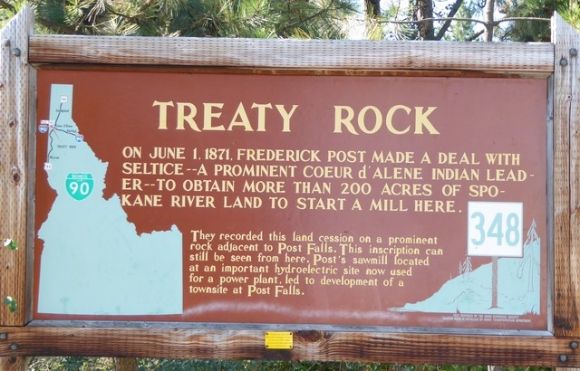
Long before the European invasion of North America, the Coeur d’Alene, who call themselves Schitsu’umsh, occupied a territory that included parts of eastern Washington, northern Idaho, and western Montana.
According to their tribal history:
“We were lake and rivers people who had permanent encampments along these waterways but also followed the natural cycle of life. We followed this sacred cycle, not only for survival but, to live live harmoniously with nature and to respect the delicate balance between creation and our ceremonial and spiritual way of life.”
The water ways that sustained the people included Coeur d’Alene Lake, Spokane River, Coeur d’Alene River, and St. Joe River. These waterways formed an aboriginal super highway between the villages and their resource areas.
Things began to change when the fur traders of the Hudson’s Bay Company and the North West Company began to enter their territory at the beginning of the nineteenth century. The traders brought the people new goods. Then came the missionaries in the 1840s who sought to make the Indians into European Christians. The Catholic Jesuits establish a mission at Cataldo.
In 1859, the Coeur d’Alene signed a treaty with the United States at the Cataldo Mission. Two years later, the United States established a road across Coeur d’Alene territory to connect Fort Benton in Montana with Fort Walla Walla in Washington.
In 1871, German immigrant Frederick Post met with Coeur d’Alene Chief Moses Seltice to negotiate the rights to a parcel of land. Treaty Rock symbolizes the verbal agreement between these two men that allowed Post to use 200 acres of tribal land on the Spokane River to start a mill. There was no formal treaty signed at Treaty Rock nor was any money exchanged for the land. Oral tradition indicates that Post promised to provide the tribe with lumber, but there is no record of that agreement being kept.
Post carved his name and the date in the rock to acknowledge the agreement. There are also pictographs on the rock done in red ochre. According to the Coeur d’Alene tribal history:
“Treaty Rock, as it is known in written history, is a special place for both the Coeur d’Alene people and the residents of today. It represents a moment in time when great change occurred and affected both a growing nation and a people that had been on these lands for thousands of years.”




Leave a Reply